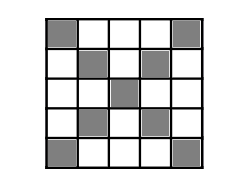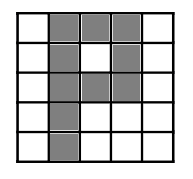Myths about teaching can hold you back


- Year 7
Equivalent multiplicative relationships
I can appreciate that there are an infinite number of pairs of numbers for any given multiplicative relationship.


- Year 7
Equivalent multiplicative relationships
I can appreciate that there are an infinite number of pairs of numbers for any given multiplicative relationship.
These resources were made for remote use during the pandemic, not classroom teaching.
Switch to our new teaching resources now - designed by teachers and leading subject experts, and tested in classrooms.
Lesson details
Key learning points
- There is a multiplicative relationship between the ratio parts, and other equivalent ratios.
- Ratios can be expressed as fractions.
- There are infinitely many equivalent fractions.
- There are infinitely many equivalent ratios.
Keywords
Proportionality - Proportionality means when variables are in proportion if they have a constant multiplicative relationship.
Common misconception
Using multiplication as repeated addition leads to incorrect additive strategies of ratios.
Focus on the multiplicative relationships between parts to whole or whole to parts. Ratio tables can help see this more easily.
To help you plan your year 7 maths lesson on: Equivalent multiplicative relationships, download all teaching resources for free and adapt to suit your pupils' needs...
To help you plan your year 7 maths lesson on: Equivalent multiplicative relationships, download all teaching resources for free and adapt to suit your pupils' needs.
The starter quiz will activate and check your pupils' prior knowledge, with versions available both with and without answers in PDF format.
We use learning cycles to break down learning into key concepts or ideas linked to the learning outcome. Each learning cycle features explanations with checks for understanding and practice tasks with feedback. All of this is found in our slide decks, ready for you to download and edit. The practice tasks are also available as printable worksheets and some lessons have additional materials with extra material you might need for teaching the lesson.
The assessment exit quiz will test your pupils' understanding of the key learning points.
Our video is a tool for planning, showing how other teachers might teach the lesson, offering helpful tips, modelled explanations and inspiration for your own delivery in the classroom. Plus, you can set it as homework or revision for pupils and keep their learning on track by sharing an online pupil version of this lesson.
Explore more key stage 3 maths lessons from the Understanding multiplicative relationships: fractions and ratio unit, dive into the full secondary maths curriculum, or learn more about lesson planning.

Licence
Prior knowledge starter quiz
6 Questions
Q1.Proportionality means when __________ are in proportion if they have a constant multiplicative relationship.
Q2.Match the equivalent fractions.
$$\frac{2}{3}$$ -
$$\frac{6}{9}$$
$$\frac{3}{5}$$ -
$$\frac{9}{15}$$
$$\frac{5}{7}$$ -
$$\frac{15}{21}$$
$$\frac{1}{2}$$ -
$$\frac{3}{6}$$
Q3.For every 2 apples, there are 5 bananas. If there are 10 apples, how many bananas are there?
Q4.For every 2 apples, there are 9 bananas. If there are 33 pieces of fruit in total, how many bananas are there?
Q5.Packs of fruit are in the ratio of 2 apples to 3 pears to 5 bananas. When there are 27 pears, how many apples and bananas are needs to make as many packs of fruit as possible?
Q6.Packs of fruit are in the ratio of 2 apples to 3 pears to 5 bananas. When there are 48 pears, how many apples and bananas are needs to make as many packs of fruit as possible?
Assessment exit quiz
6 Questions
Q1.How many equivalent ratios are there to "For every 1 apple, there are 2 bananas."?
Q2.Select the equivalent ratios to "For every 10 stars, there are 2 moons."
Q3.What is the equivalent ratio for this?

Q4.What is the ratio of shaded to not shaded?

Q5.What is the ratio of shaded to not shaded?


